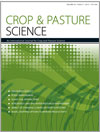CP13135Genetic approaches to enhancing phosphorus-use efficiency (PUE) in crops: challenges and directions
Improved PUE will become increasingly important in future as farmers strive to achieve higher levels of productivity and maintain profitable enterprises in the face of increasing fertiliser prices. Progress has been hampered by the complexity of soil-plant interactions, incomplete understanding of the genetic control of PUE and its underlying physiological and molecular basis, as well as a lack of a consistent conceptual understanding of PUE. The current status of genetic improvement of PUE is reviewed, and future work is urged to place greater consideration on realistic field scenarios, which will require heightened cross-discipline interaction.
CP13135 Abstract | CP13135 Full Text | CP13135PDF (657 KB) Open Access Article




